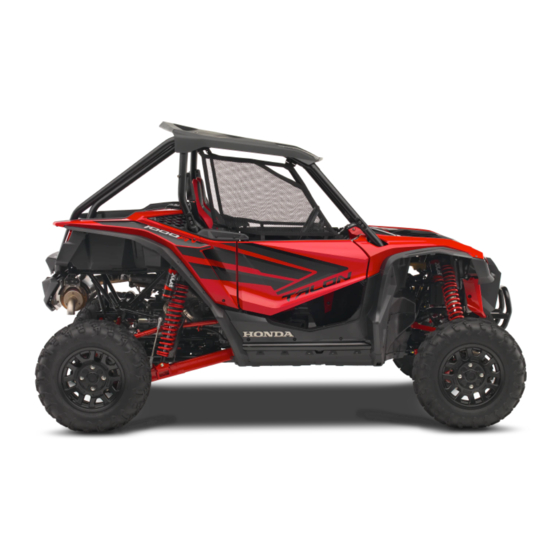
Table of Contents
Advertisement
Contents
These pages give an overview of the contents of your owner's
Contents
manual.
The first page of each section lists the topics discussed in that
section.
Driver & Passenger Safety .........................................................1
The most important safety guidelines, how accessories and
modifications can affect your safety, and the location of safety-
related labels on your vehicle.
Instruments & Controls ............................................................11
The location, function and operation of the indicators, driver
controls, and other operational components.
Before Driving...........................................................................73
The importance of wearing a seat belt, helmet, protective eyewear
and other protective gear, how to make sure you and your Honda
are ready to drive, plus load limits and guidelines on carrying
cargo.
Basic Operation & Driving Guidelines .....................................85
How to start and stop the engine, select a driving mode and gear,
plus guidelines for driving on hills and other off-road situations.
Servicing Your Honda ............................................................111
Why your vehicle needs regular maintenance, what you need to
know before servicing your vehicle, a maintenance schedule, and
instructions for specific maintenance and adjustment items.
Tips ..........................................................................................213
How to store and transport your Honda, and how to be an
environmentally responsible driver.
Contents
31HL6620
2021 Talon 1000 (SXS1000S2R/S2RD/S2X/S2XD)
MOM 17366 (1911)
Advertisement
Chapters
Table of Contents
















Need help?
Do you have a question about the TALON 2021 and is the answer not in the manual?
Questions and answers